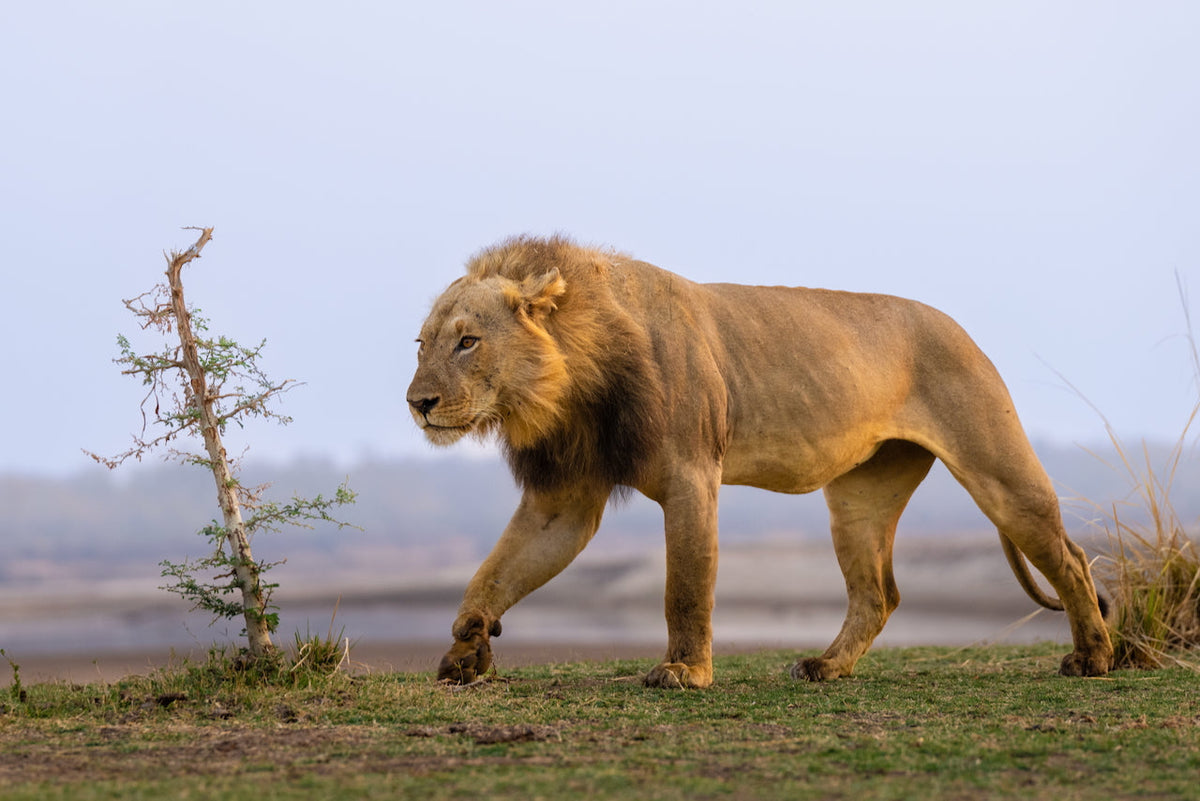

FOR IMMEDIATE RELEASE
May 15th, 2025 | Boulder, CO
Filmmaker Tommy Joyce and the team at Triage Creative have been awarded Silver at the prestigious International Tourism Film Festival Africa (ITFFA) 2025 for their cinematic work with Sungani Lodge in Zambia’s South Luangwa National Park.
The award-winning film, shot entirely on location in the Luangwa Valley, is more than just a showcase of a luxury safari experience. It’s a visual love letter to one of Africa’s most important ecosystems, a celebration of community-driven conservation and a reminder of the delicate balance between tourism, wildlife and the livelihoods that depend on them.

A Story Told Through the Lens of Conservation Tourism
Sungani Lodge is a family-owned, sustainably operated property set on the banks of the Luangwa River, in a part of Zambia renowned for its rich biodiversity. The area is home to thriving populations of elephants, leopards, hippos, giraffes and an extraordinary variety of bird species. It is also one of Africa’s best places to witness the natural cycles of flood and drought that shape life in the bush.
In the film, sweeping aerial sequences transition into intimate moments, a lioness watching from the shade of a winterthorn tree, an elephant calf playing in the shallows, the warm laughter of local staff welcoming guests after a game drive. Joyce’s direction captures both the grandeur and the nuance of this remote corner of Zambia.
Joyce’s fine art collections span all seven continents, from the stark white silence of Antarctica to the vibrant coral reefs of the Pacific. Each body of work reflects a deep connection to place, capturing fleeting moments of light, wildlife and culture that invite viewers into the soul of a destination.


A Filmmaker’s Perspective
Joyce, whose career has taken him from the Himalayas to Niger for National Geographic, understands that a story’s power lies in emotional connection. For the Sungani Lodge film, that meant resisting over-produced safari tropes in favor of genuine, unfiltered moments.
The result is a narrative that allows the audience to feel the stillness of the bush at dawn, the anticipation of tracking fresh leopard prints and the awe of standing beneath a sky crowded with stars, all while understanding the deeper significance of what tourism enables in such places.
The ITFFA jury praised the piece for its authenticity, cinematography and its ability to balance visual beauty with a clear conservation message.
For him, the project wasn’t simply a commercial assignment, it was a mission to portray the true heartbeat of conservation tourism.
“Tourism here is the thread that holds everything together,” Joyce has shared in past conversations about his work. “Without it, the financial resources to keep these landscapes intact and these animals protected simply wouldn’t exist.”

How Tourism Protects the Wild
In many parts of Africa, tourism is the primary funding mechanism for conservation. Revenue from lodges like Sungani directly supports anti-poaching patrols, habitat management and scientific monitoring programs.
In South Luangwa National Park, these funds sustain year-round efforts to protect endangered species like African wild dogs and pangolins. Anti-poaching teams cover vast territories, often on foot, to intercept illegal hunting and safeguard migration corridors.
Tourism also brings tangible benefits to nearby communities. Sungani employs and trains local residents in guiding, hospitality and maintenance roles, providing stable incomes in a region where economic opportunities can be scarce. In turn, these employees become ambassadors for conservation, carrying the value of wildlife protection back to their villages.
This holistic model creates a powerful loop:
Tourism generates revenue
Revenue funds conservation
Conservation preserves wildlife
Wildlife draws more tourism
Communities thrive as active participants in protecting their heritage
Without sustainable tourism, the cycle collapses.

The Larger Context: African Conservation Travel
South Luangwa is part of the Luangwa Valley , one of the last remaining unspoiled wildlife sanctuaries in Africa. The park is globally recognized for its walking safaris, an immersive experience pioneered in Zambia that allows travelers to connect with the environment in a more intimate way.
Conservation tourism across Africa faces challenges, from fluctuating international travel patterns to climate change impacts.
Films like Joyce’s play a key role in educating potential travelers about why their visits matter and why choosing lodges committed to conservation makes a measurable difference.
By showing Sungani not just as a luxury escape but as a hub of positive environmental and social impact, Joyce’s work speaks to a growing audience of purpose-driven travelers who want their journeys to leave a lasting legacy.

Beyond the Screen: Fine Art Prints as Conservation Ambassadors
Many of the images captured during filming are now available as limited-edition fine art prints through the Africa Fine Art Photography Collection.
These prints do more than decorate walls, they tell a story. Each photograph is a window into the landscapes and wildlife of South Luangwa, serving as a daily reminder of the need to protect these places. For collectors, it’s a way to bring home a piece of the wilderness while contributing to the broader conversation about conservation.
Why This Award Matters
Winning Silver at the ITFFA is not just an acknowledgment of film making skill, it’s an opportunity to amplify the Sungani story to a global audience. Recognition from an international jury lends credibility and visibility to the lodge, encouraging more travelers to choose destinations that actively reinvest in their environments.
For Joyce, the award is both a professional milestone and a personal affirmation that visual storytelling can inspire real-world action.
Explore the Sungani Collection
About Tommy Joyce
Based in Boulder, Colorado, Joyce works commercially around the globe while dedicating significant time to conservation-driven projects. His fine art photography store offers curated collections from Africa, Asia, and beyond, each drawn from assignments that combine adventure, environmental stewardship, and narrative depth.
When not on assignment, Joyce lives in Boulder with his wife, fellow filmmaker Britt Mumma , and their golden retriever, Honey . Together, they continue to collect and share ethereal moments from around the world through their cameras — moments that live on both in gallery-quality prints and in the hearts of those who experience them.




